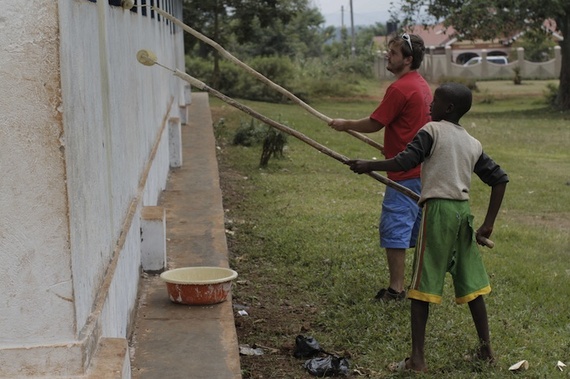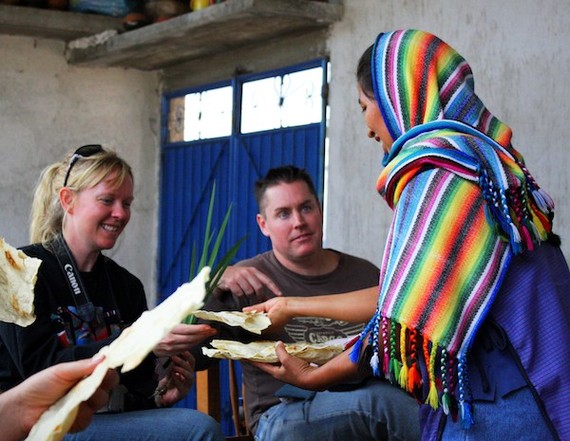When photographing an object in motion, you have three principal options: use an incredibly fast shutter speed for a crisp capture of both the moving object and the background, but not a sense of the motion; pan as the object passes to freeze just the object against an artistic blur of background; or, for background clarity and an object blur, simply snap the object without panning.
No matter what you do, though, something is missing: a sense of speed, or pixel-perfect detail of either the object or the background.
This necessary omission of something essential was the challenge to commissioning and editing Adventures Less Ordinary: How to Travel and Do Good, a new and free guide to mindful adventures due to be released in mid-January and drawing on the combined expertise of two dozen leading voices advocating for travel that makes a difference.
Should the snapshots of the ways in which travel generosity can be harnessed provide a clear sense of what's happening today against the broader state of travel and tourism, but without addressing any sense of the need for growth and change? Or should it focus on one element (the ways for altruistic travelers to give back, for example) at the expense of another (the tourism context inspiring such responsible behavior) and preserve the sense of progress and development?

Two volunteers, one local and one visiting, paint at the Kivubuka Primary School in Jinja, Uganda. Photo courtesy of Rachael Imam and Soft Power Education
Travel-Inspired Community Service
For decades, high-minded, compassionate and generous travelers have understood the virtues of sharing time and money with worthy projects around the world. Students have offered their vigor and energy. Skilled professionals have donated their services. People of all stripes have made good with their time and money to improve the lot of others less fortunate.
Today more than ever before, there's a sweeping sense of travel-inspired community service, with a broad embrace of the whole globe as our community. It has prompted growing numbers of free-spirited, adventure-minded explorers to step out of familiar routines and then interact with the world around them in ways that make a positive and lasting impact on the people and communities they visit and of which they are a part.
But while there's nothing new about the desire to give as much as (or more than) one gets, many of the means by which such charitable assistance can be delivered are quite novel. And these days the knowledge of how best to leverage both big-heartedness and the jargony lexicon used to describe it is constantly in flux. More than just a work in progress, the whole complex of thoughts and actions associated with voluntourism, volunteerism, volunteering, service learning, charity challenges, travel fundraisers etc. is constantly shifting its basic shape and its substance.
This is all the more true as volunteering and fundraising topics are no longer as standalone as they once were. The activities with which they are associated are being integrated into the broad and growing pool of commercial but no less authentic travel experiences so appealing to new generations of travelers.

The Inspired Escapes water safari engages in a local clean water project, shadowing local residents as they build clean water wells in their community. Photo courtesy of Inspired Escapes
Acknowledging Complexity
So how could all of this be tackled in one guide, knowingly surrendering to an incomplete picture while hoping to provide as broad and as deep a base of understanding as possible? How could this unwieldy topic be introduced without overwhelming the casual traveler or being too jejune? How could this be accomplished without painting with too broad a brush and misrepresenting the work being done - undermining the good or erroneously overvaluing the bad? How could it be part of a collaborative effort to #MendNotEnd voluntourism?
The trick was to acknowledge the complexity of the topic and tackle it from as many perspectives -- and with the input of as many voices -- as possible.
That is most evident in Part 1 of the guide, called Good Actions: What's Being Done, which is, in keeping with the photographic analogy used above, the snapshot employing a fast shutter speed, freeze-framing topics and their contexts. A chorus of authoritative voices weighs in on a selection of typical activities through which service-oriented and philanthropic travelers have been doing good - working with children or wildlife, shoring up infrastructure and contributing to community development. By tapping these deep reserves of knowledge and experience, this guide provides readers with a critical lay of the land.
In an effort to reintegrate a sense of percolating change, one that encourages readers to focus on future developments and how best to leverage them, the second section of the guide, called Good Intentions: What to Think About, encourages review of what to think about before, during and after taking an action.

Visitors on a Fundación En Vía tour get a chance to have meaningful conversations and make connections with the local people in Oaxaca, Mexico. Photo courtesy of Kim Groves
Woven into both sections are numerous Eyewitness contributions: short, first-person testimonials that ground any broad theory and principle in very real, practical and specific practices. They add to a sense of collective effort to celebrate meaningful action.
Three Core Considerations
In both sections, a point was made of assembling information that covers three core considerations:
* the state of the service-oriented travel industry -- Contributors were asked to hold nothing back when describing what's going on, how things work and how successful they have proven to be.
* a sense of the pitfalls of which travelers should be aware -- As nothing's perfect, contributors were asked to explain how to approach service-focused travel planning with a smart and critical eye, teasing out the areas of concern and finding ways to deal with them that help improve the space.
* the kinds of questions to ask when seeking to meet the needs of local communities and the emotional and philanthropic desires of donors -- Moving toward improvement means giving people the means to root out trouble and then steer well clear of it.
The result is a potent resource for compassionate people seeking the ultimate adventure and guided as much by the good people give as the good they get.